4 min read
MIPI in IoT: Enabling the Smart Factory
![]() Ian Smith, MIPI Alliance Technical Content Consultant
:
1 February 2021
Ian Smith, MIPI Alliance Technical Content Consultant
:
1 February 2021
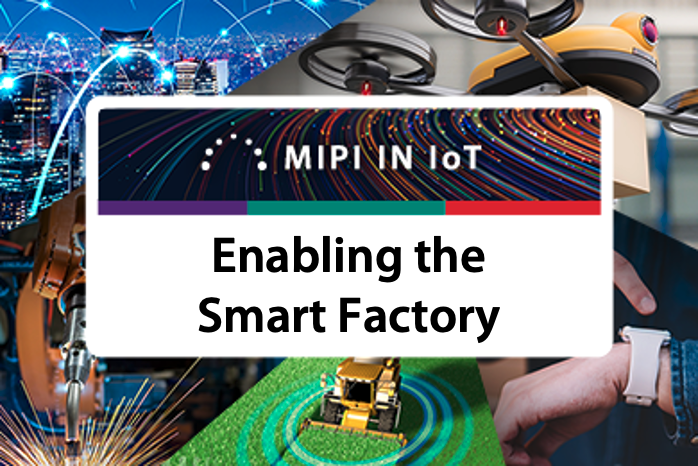
- News & Events
- News
- Blog
The scope of the Internet of Things (IoT) is vast, covering numerous consumer and enterprise market sectors. For a closer look at how MIPI specifications support growth in IoT, we’re launching a new series of blog posts that will focus on a different market each month, kicking off with an examination of MIPI specifications in Smart Factories.
According to analyst predictions, the Smart Factory market is estimated to grow from USD 214.7 billion in 2020 to USD 384.8 billion by 2025, covering virtually all industrial sectors, including process industries such as oil & gas, food & beverages, pharmaceuticals, chemicals, energy & power, metals & mining, pulp & paper, as well as discrete industries such as automotive, aerospace & defense, semiconductor & electronics, medical devices, machine manufacturing and others.
What is a Smart Factory?
A Smart Factory is a highly digitized manufacturing facility that continuously collects and shares data through the use of connected machines, devices and production systems. The data is used across the wider manufacturing facility to proactively address production issues, improve manufacturing efficiency, enhance logistics and respond to new demands.
 The growth of the market is being driven by the adoption of technologies such as 5G, artificial intelligence (AI), big data analytics, cloud computing, machine vision and robotics, which are combining to make the benefits of Smart Factories a reality. By connecting the physical and digital worlds, Smart Factories can monitor and optimize the entire production process, covering manufacturing tools, the supply chain and individual operators on a factory floor.
The growth of the market is being driven by the adoption of technologies such as 5G, artificial intelligence (AI), big data analytics, cloud computing, machine vision and robotics, which are combining to make the benefits of Smart Factories a reality. By connecting the physical and digital worlds, Smart Factories can monitor and optimize the entire production process, covering manufacturing tools, the supply chain and individual operators on a factory floor.
Benefits of using MIPI specifications in Smart Factory devices
MIPI develops and maintains interfaces and protocols to connect the key embedded electronic components (cameras, displays, sensors, communications modules) within electronic devices, including devices found within Smart Factories. MIPI’s key interface specifications, conformance test suites, debug tools, software and other resources allow developers to create state-of-the-art, innovative, connected devices—accelerating time to market and reducing costs.
Use of MIPI specifications provides key benefits to Smart Factories:
- Safety critical devices, such as industrial robots and machines, will benefit from MIPI’s functionally safe and secure interfaces
- Low power devices, using constrained power supplies, will benefit from MIPI’s low-power interfaces
- Devices with wireless connectivity will benefit from MIPI’s 5G preparedness
- Size-constrained, tightly packaged devices will benefit from MIPI’s low pin counts, low wire counts and low EMI interfaces
- MIPI’s associated software and debug resources will accelerate device design and development processes
Examples of MIPI specifications in Smart Factory devices
Smart Factories contain a broad range of devices. We’ve highlighted a few examples below to demonstrate the wide applicability of MIPI specification in the industry.
Robots with machine vision
Robots and other automated machines are at the heart of many Smart Factories, efficiently performing repetitive tasks with high precision. Many of these machines are being augmented with high-bandwidth sensors, such as high-resolution cameras, to enable quality control and other vision-based AI functionality.
MIPI specifications that support robots and other machines with machine vision include:
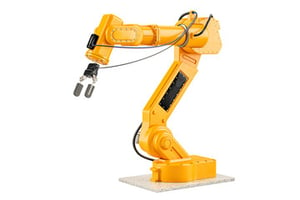
- MIPI CSI-2® over MIPI C-PHY℠ / D-PHY℠ / A-PHY℠ as a highly scalable protocol to connect ultra-high-resolution cameras, enabling low-power vision inferencing and machine vision
- MIPI A-PHY for use in large machines as a long-reach (≤15m), ultra-reliable physical interface to link a machine to its control system in a noisy EMI environment
- MIPI I3C® to provide a low complexity, common, two-wire interface to connect sensors and actuators used in a robot to control systems
Automated Guided Vehicle (AGV)
Automated guided vehicles are often used within Smart Factories to transport materials around a site, following predefined routes using radio beacons, vision cameras and lasers for navigation.
MIPI specifications that support automated guided vehicles include:
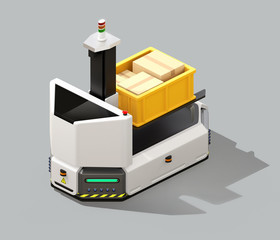
- MIPI CSI-2 over MIPI C-PHY / D-PHY / A-PHY as a highly scalable interface to connect ultra-high-resolution cameras (or lidars), enabling low-power vision inferencing and machine vision for the AGV to navigate around a factory and avoid obstacles
- MIPI A-PHY to provide a long-reach (≤15m), ultra-reliable physical interface to link components within the AGV in a noisy EMI environment
- MIPI I3C to provide a low complexity, common, two-wire interface to connect the sensors and actuators required to control and drive the AGV
- MIPI RFFESM within the AGV’s radio communications module to enable connectivity to operation and maintenance systems
Machine control systems with advanced user interfaces
Machine control systems within Smart Factories are becoming more advanced, connecting the machine to the rest of the factory’s systems and providing ever richer user interfaces to allow operator monitoring and control.
MIPI specifications that support machine control systems with advanced user interfaces include:
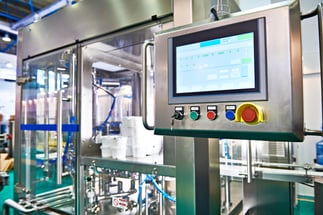
- MIPI DSI-2℠ over C-PHY / D-PHY / A-PHY to drive high-resolution display panels
- MIPI Touch℠ over MIPI I3C to enable control panels with advanced touchscreen-based user interfaces
- MIPI I3C to provide a low complexity, common, two-wire interface within a control system to connect simple user interface components such as push buttons, LEDs and buzzers
- MIPI A-PHY to provide a long-reach (≤15m), ultra-reliable physical interface to link a control system to a machine in noisy EMI environments
Smart industrial tools
Production lines within Smart Factories can use a vast array of high-precision industrialized power tools that must be regularly maintained and calibrated to ensure optimum performance. Many of these tools are becoming smart, connected devices, allowing remote monitoring and enabling predictive maintenance based on actual usage.
MIPI specifications that support smart industrial tools include: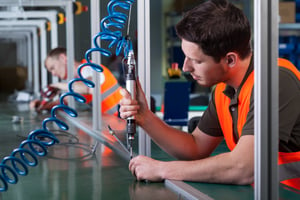
- MIPI I3C to provide a a low complexity, common, two-wire interface within a smart tool to connect switches, actuators driving motors, vibration sensors and simple user interface components such as LEDs and buzzers
- MIPI RFFE within the smart tool’s radio communications module to enable connectivity to operation and maintenance systems.
Learn more
For more information on how MIPI specifications are enabling the Smart Factory and examples of other IoT use cases, download the recently published white paper: "MIPI Alliance: Enabling the IoT Opportunity."
You can also access the MIPI DevCon 2020 IoT presentation and closing chat session to hear from industry experts about the growth of IoT, market trends and the role of MIPI specifications in supporting connected devices.






